While writing this report I’ve exchanged literally-a-couple texts with artist Katja Novitskova, with whom I share the same annoyance towards micro-labelling ( •̀-•́)╦̵̵̿╤─ - - -
According to Katja ‘It's not a problem of categorization itself, it’s a problem of commodification’ and I think she is right, in the sense that reducing objects to a category they allegedly belong to comports a certain fetishization.
So it’s important to state that here I’m making general, far-stretched, personal and questionable assumptions. I encourage readers to find zones of disagreement and to share their dissonances. (ꈍᴗꈍ)☕
ON THE TERM:
‘Internet core’ came casually to my mind after mentally listing net art and post-internet. I like the -core suffix, it gives the vibe of an internet downsizing, reminds me of the hardcore subculture and makes me want to descend into the Do Not Research sleeper cell’s bunker, where we’ll prepare all together for the apocalypse. ☣ (っ˘ω˘ς )・ω・ლ) ☣
To better stress the difference with post-internet I am keen to abbreviate it in E-core, as it also gives more stress on the imminence of an e-cological catastrophe.
Some of the discarded alternative terms based on the successors of postmodernism (what post-internet is based on) were: hypernet, transnet, network-core, metanet (proposed by artist Vladimir Storm), enactnet, alternet, infranet.
CORECORE
Corecore is an aesthetic current born on TikTok in the 2020s, where frenetic video clips are stitched together with intense music, often to cover anti-capitalist messages.
There are many similarities with corecore and internet core, namely the starting period and the political/environmental issue covered since the first posts, so maybe corecore could be expanded beyond TikTok’s trends/ become an interchangeable term for internet core (?)
INTERNET CORE: COMPARISON AND THEORIZATION
I identify as ‘internet core’ the tendency which has recently emerged within contemporary art, or more specifically within internet art (a term which encompasses also net art and post-internet).
TEMPORAL COORDINATES, POLITICAL HAPPENINGS
Pinpointing the year of origin of an art movement2 is pretty arbitrary, but I would say a sort of schism with the past became more evident due to the COVID-19 pandemic when IRL activities got erased. Given the little time/space to evade each one's occupation and personal bubble, the 2020s worldwide crisis became totalizing, not only in an economical, medical and environmental sense but also on an identitarian, social and spiritual level.
The Internet became as much totalizing. It no longer was an alternative nor an intersection of reality, but pretty much the only existing reality.
People started to rely on small group chats (with their neighbours, friends or their family) to alleviate their acquainted alienation. Artists as well fueled an already-present push towards micro-communities, by joining groups such as 0xsalon, Do Not Research, New Models, Trust and virtual care lab.
While net art involved networks of art/tech colleagues, post-internet had art influencers followed by a vast public; the current internet core scene is more secluded in a way (as information circulates more and more within private channels on the Discord app, Telegram groups, Substacks or on Patreon.com for example), but also keener to attract and deeply engage with users outside the traditional art-gallery attendance.
QUOTES ON POST-INTERNET AND DIFFERENCES WITH INTERNET CORE
In Dispersion artist Seth Price noted that post-internet content producers were not interested in collectivity, but in getting as close as possible to individuals.
He wrote: ‘Perhaps an art distributed to the broadest possible public closes the circle, becoming a private art, as in the days of commissioned portraits.’ 3
In a way, he predicted the rise of identity politics or the boom of profile pictures’ NFTs, which are both components of the internet core era.
Although the (parasocial) practice of modelling one's own identity around a certain celebrity started with post-i, it's within the internet core era that the most convoluted cases unfolded. Cancellation policies seem to show a stronger dependency on public figures in the process of self-building (the alliance or the hostility towards someone is mostly proof of one's moral compass and it rarely envisions compromises or resolutions).
Another difference based on identity pertains to the role of the artist, generally considered a hacker during net art, a surfer during post-internet and a poster during internet core.
As stated by theorist Gene Mc Hugh when ‘the Internet is less a novelty and more a banality’ 4 we enter the post-internet realm; when the Internet is incorporated into the users’ psycho-physical mechanics there stands internet core.
Artist Marisa Olson noted that post-internet is characterized by ‘a copy-and-paste aesthetic that revolves around the appropriation of web-based content in simultaneous celebration and critique of the internet.’ 5
As much as remixing and appropriation are still diffused, with internet core the edits and the universe one builds around the art they produce has bigger importance; this can be seen in the political part of Instagram (Politigram) where each admin tries to stick to a political view and interpret the world accordingly as new events are developing.
Similarly, the personal narration an artist unfolds generates more interest than the art in itself; especially when identitarian factors of ethnic provenience are relevant, it has become important *sobs* to present yourself as progressive and multicultural as possible, always ready to manifest your support towards the current cause. This is, on one hand, a necessity as artists have to be informed, but also a constrain to their free will/a menace to their own survival (ideological absolutism diverges from capitalism, so often what is morally preferable implies taking distance from galleries or collectors that guarantee the artists’ source of income).
Guthrie Lonergan conscripted into post-internet art those pieces that were 'Internet Aware'–or whose photo was ‘more widely dispersed viewed than the [art] object itself.’ 6
I feel that internet core has mainly works conceived in a social media format (I see a growing number of videos being shot vertically, for phone screens, opposed to those filmed horizontally, in 16:9, for the gallery setting and a considerable quantity of portrait or square paintings), almost as if there was no interest towards the gallery space and that’s why non-located exhibitions such as those in Solo Show have a wider circulation/generate wider interest than those taking place in official museums.
Artie Vierkant points out that ‘post-Internet is defined as a result of the contemporary moment: inherently informed by ubiquitous authorship, the development of attention as currency, the collapse of physical space in networked culture, and the infinite reproducibility and mutability of digital materials.’
Internet core is driven by non-authorship as AI permits anyone to adopt any style and as often tags or catchy nicknames are more important.
I believe that more than circulating through an attention economy, art is more evaluated in terms of involvement (that explains the success of NFTs used as profile pictures and of communities growing around relatable personalities).
Internet core saw the resurgence of deep-fried memes online, which are made by ‘blitzing an image out of recognition [therefore allowing] users to bypass Instagram’s shadowy censorship rules’ 7
I would say there's a formal urgency more than a practical one. There is a seek for works that aren't fully digestible and patinated, but a bit dissonant, unsatisfying, incomprehensible, and chaotic.
In 10 years we’ll probably see an impoverished aesthetic, some self-mutilation. A table of content will follow ✧ ─=≡Σ((( つ•̀ω•́)つ
A net art exhibition, specifically Eva & Franco Mattes virus Biennale.py as exhibited at the 49th Venice Biennale curated by Aurora Fonda, Jun 10 – Nov 24, 2001 https://0100101110101101.org/show-49th-venice-biennale/
A post-internet art exhibition, specifically Simon Denny’s, TEDxVaduz redux at T293, Rome, February 27 – April 1, 2014 https://www.contemporaryartdaily.com/project/simon-denny-at-t293-rome-8254
An internet core exhibition, specifically Do Not Research Group Show, lower_cavity, in Holyoke, Massachusetts, 2022,
https://donotresearch.net/posts/do-not-research-group-show
WHAT IS THE INTERNET?
As much as I tried to give an analytic disassembling of three different internet art currents, none of the attributes I gave nor the descriptions I made adequately explain what net art, post-internet and internet core are in a deeper sense.
I’ve seen net art and post-internet being differentiated (from other contemporary art or between themselves) essentially by themes and aesthetics or by some type of political attitude, which all produced unsatisfying conclusions.
More than a medium or a theme or a political playground, I would say that the Internet is a mindset, an approach, a methodology, a language.
Exactly as painting, sculpture or photography (etc), it’s not really a matter of the instruments an artist uses but it’s much more about how their imagination works.
When talking about mental images, neuro-scientists have individualised different types of mental representation. There are no fixed groups but more general indications, which are usually summed in a picture like this:
When imagining an apple some people can picture it vividly and even mentally rotate it in 3 dimensions (hyperphantasia), others rely on a more cartoonish exemplification, while a small percentage of the population is not able to see pictures at all (aphantasia).
This order of representation is not to be interpreted as a hierarchy but more like a list of different approaches.
As pseudoscientific as it may appear, I feel this is the closest metaphor to art-making I was able to come up with.
I feel that artists have each their own approach to the world, which is shaped by their practice (or sometimes a combination of practices).
The internet could be interpreted as a mixture of all precedents art forms, not really from a historical perspective but more from a material and mental approach.
I don’t find really useful those parallels between post-internet and minimalism or in general this reasoning where an art form is legitimised by quoting distant predecessors.
Internet is more practically a hybrid of painting, sculpting, video-making, photography, performing (etc) and it can’t be confined, executed or conceived in dependency of a technological apparatus.
Imagine someone sees a painting in your studio and tells you: 'You should turn it into a sculpture!'
You would feel dead inside. Because even if it would be possible to convert the figures in the painting into sculptures and arrange them like in the painting, the resulting work wouldn't make any sense. Also as you- the painter- are imagining this, something inside of you is naturally nauseated and repulsed by this presumed interchangeability of forms.
It feels like going against nature.
It's not really a conceptual, historical, thematic, habitual or skill barrier, it's literally something in the artist's guts.
Painting is something an artist feels in their guts. Same with sculpture or the internet or performance etc or in some cases a mix of practices.
My local idol Michele Gabriele, who is an Italian artist loosely affiliated with the post-internet group, once casually told me he was a sculptor and I immediately get what he meant:
he has visions of sculptures (((~◕ᗜ◕))~*:・゚✧10
Do Androids Dream of Electric Sheep? I think so, after all internet artists do get visited by internet sheep (•́ᴗ•̀)づ
I observed the tendency in new media circles to prioritize the idea behind an artwork over its appearance. As if they could be split!
Even in the early ages of net art – when objects who never before crossed the gallery entrance gained the status of artworks – one could see a coherence, a Spinozian unity of forms of being and forms of thought.11
That is probably why the categorization of ‘new media’ got rightly dismissed. A painter using a camera would still paint.
[I think that the repulsion towards the contemporary art market that is displayed by new media purists’ is much more linked to the inability to realise that their work is lacking.
A wrongly formalised work is a work badly conceived.
Not that contemporary art should be everybody’s target, but I feel that creative makers should be aware of this state of things.]
There are various statements of post-internet artists, where they seem to make distinctions between the IRL art piece and the URL one.
I personally don’t think that post-internet virtual instalment solutions or the various experiments in art documentation should be considered as different versions of an artwork (implying that its shape has different degrees of adherence to an original idea), but rather part of a bigger artwork, an internet practice, which is per se various and dispersed.
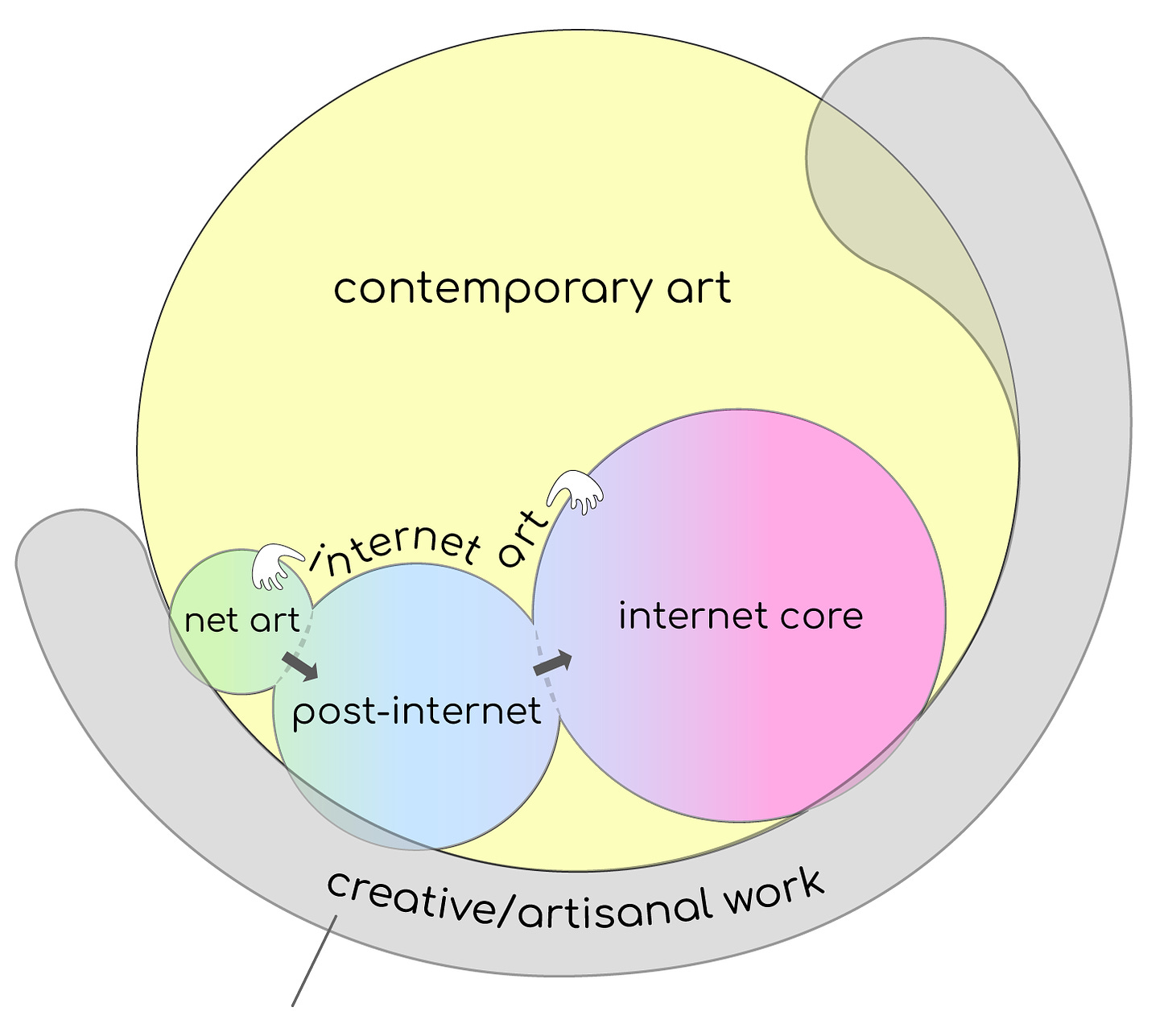
I found some assonance in this text by Judson Wright:
Likewise, a painter may be drawn to the medium of paint, due to some personal intelligence, and is provided with tools to embody some otherwise un-articulateable problem. There is no possibility that an inanimate tool, such as a computer, actually ‘curates’ the problem-solving task at hand, creating the mythology within the artist’s mind. In the same way, the abacus does not perform mathematics, but embodies a part of the cognitive process where limitations of the human mind are most apparent. Furthermore, in a minority of similar tool-using cases (namely computers), there is clearly the sensation experienced of animate behaviors and anthropomorphic personalities attributed to some events on the screen and not others. These cognitive perceptual-ability-enhancing cases we might call ‘art.’ 12
To expand the meme significance I here added internet cultures on the scheme of Phylomemetic Tree of Internet Memes (Neo-Lamarckian Model), authored by Seong-Young He and posted on 2021-10-10, 22:18 https://figshare.com/articles/figure/Phylomemetic_Tree_of_Internet_Memes_Neo-Lamarckian_Model_/16 780462
1 A group of online artists and content creators (DNR)
2 pass me this term, take it as vaguely as possible
3 Seth Prince, Dispersion in Mass Effect, Art and the internet in the twenty-first century, edited by Lauren Cornell and Ed Halter, The MIT Press / Cambridge, Massachusetts / London, England, p.59
4 McHugh, Gene, Post Internet blog, December 2009-September 2010
5 Olson, Marisa, Lost Not Found: The Circulation of Images in Digital Visual Culture In Words Without Pictures, edited by Alex Klein, 274–284, Los Angeles, CA: Museum Associates/LACMA, 2009
6 Vierkant, Artie, The Image Object Post-Internet, 2010 https://jstchillin.org/artie/pdf/The_Image_Object_Post-Internet_a4.pdf
7 Yalcinkaya, Günseli, Deep-fried memes: what are they and why do they matter?, 11th November 2022 https://www.dazeddigital.com/life-culture/article/57422/1/deep-fried-memes-surveillance-capitalism-inst agram-reddit-censorship
8 Žižek Tech Fit by DIS, https://disown.dismagazine.com/products/zizek-tech-fit, 2023
9 Chatonsky, Gregory, Post-Internet: time, ontology and style, april 2015, http://chatonsky.net/post-internet-time/
10 [I'm personally mostly visited by ghosts of paintings and by the spirit of (ʃƪ ̆ 3 ̆)Jon Rafman eheh]
11 This is in contradiction with Plato’s view of Iperuranium’s ideas -original and perfect- being the blueprint for imperfect IRL copies.
12 Wright, Judson, Role in the Development of Cognition in Augmented Reality Art From an Emerging Technology to a Novel Creative Medium, edited by Vladimir Geroimenko, Springer Nature Switzerland AG 2022, p.56




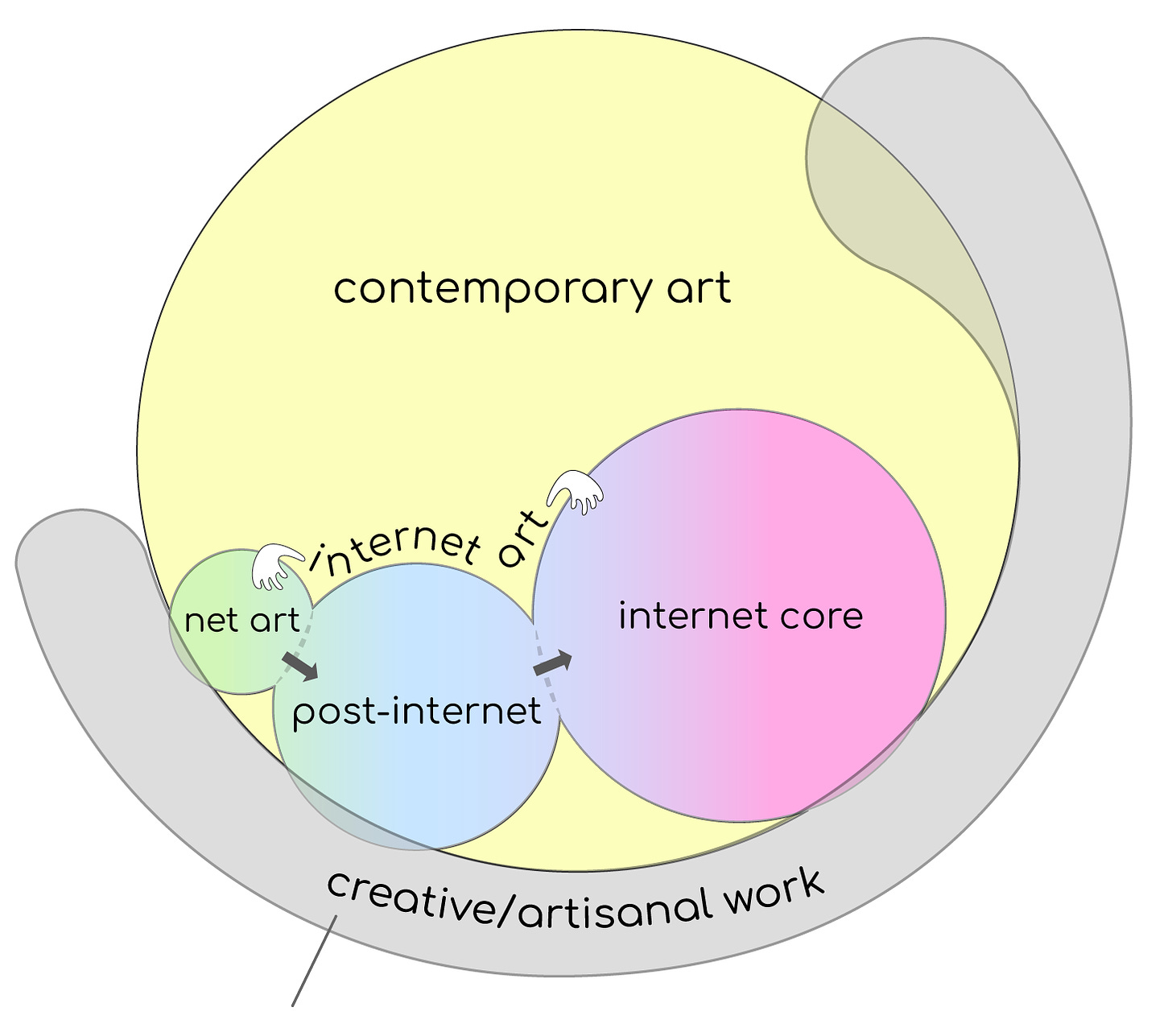
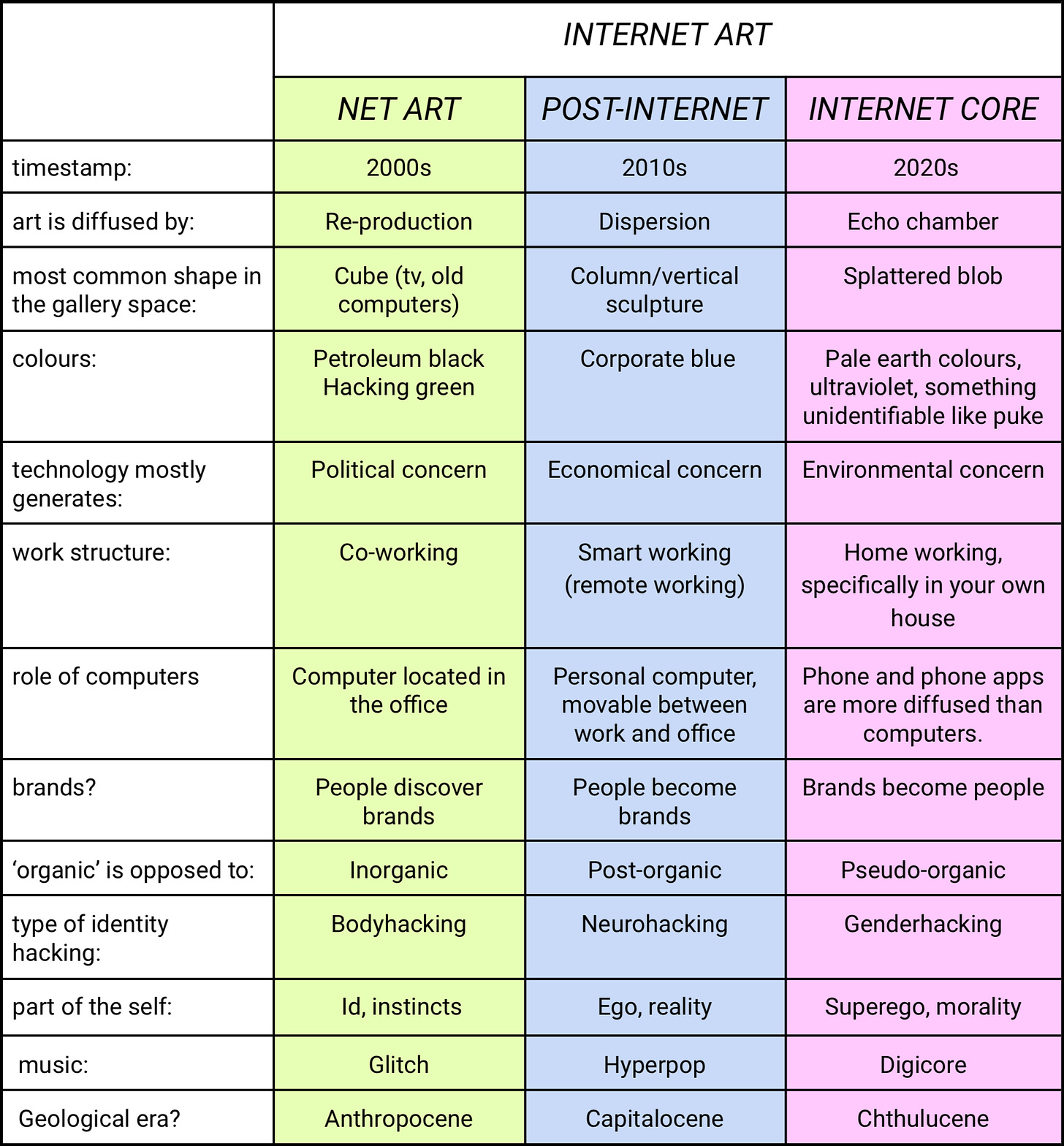
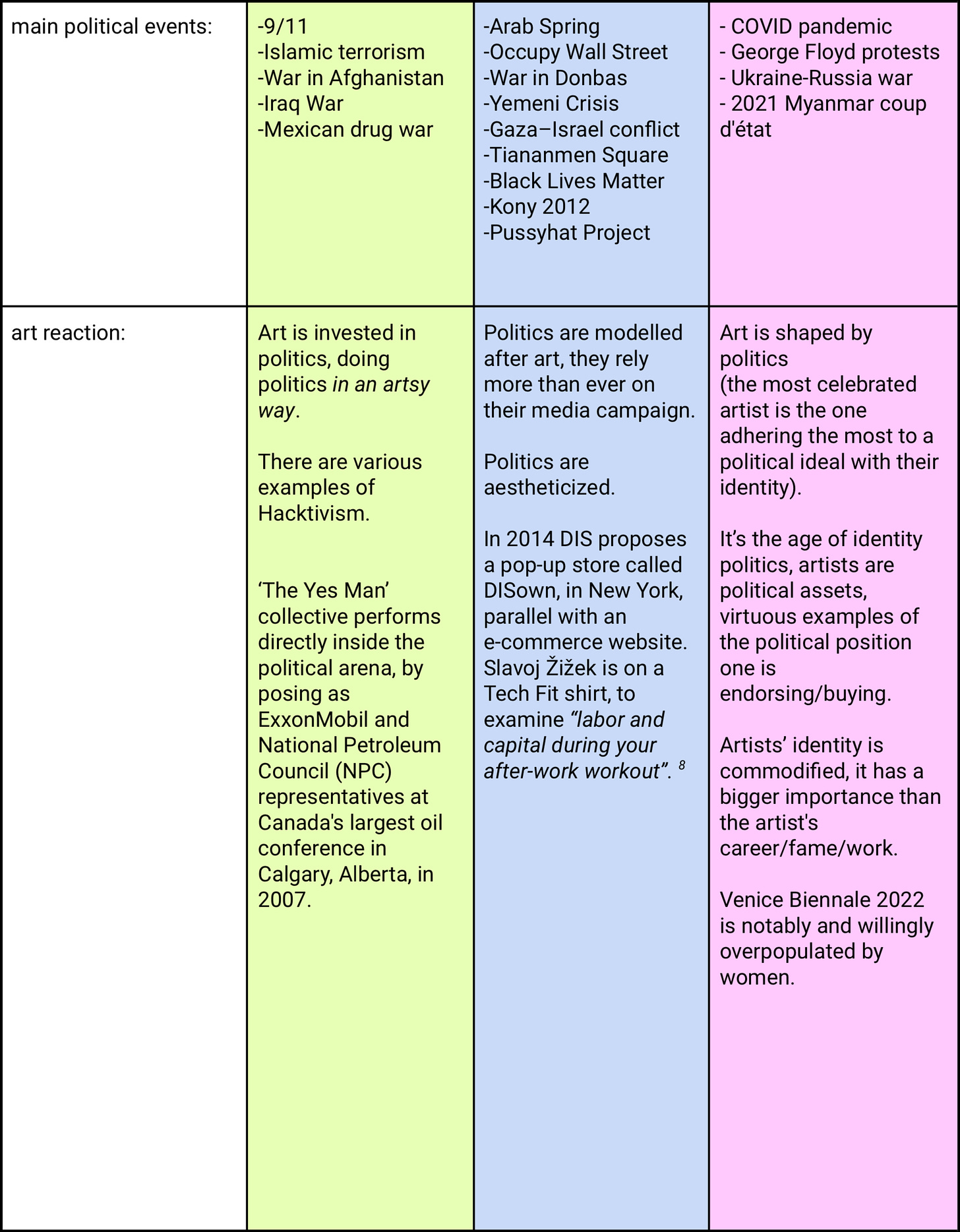
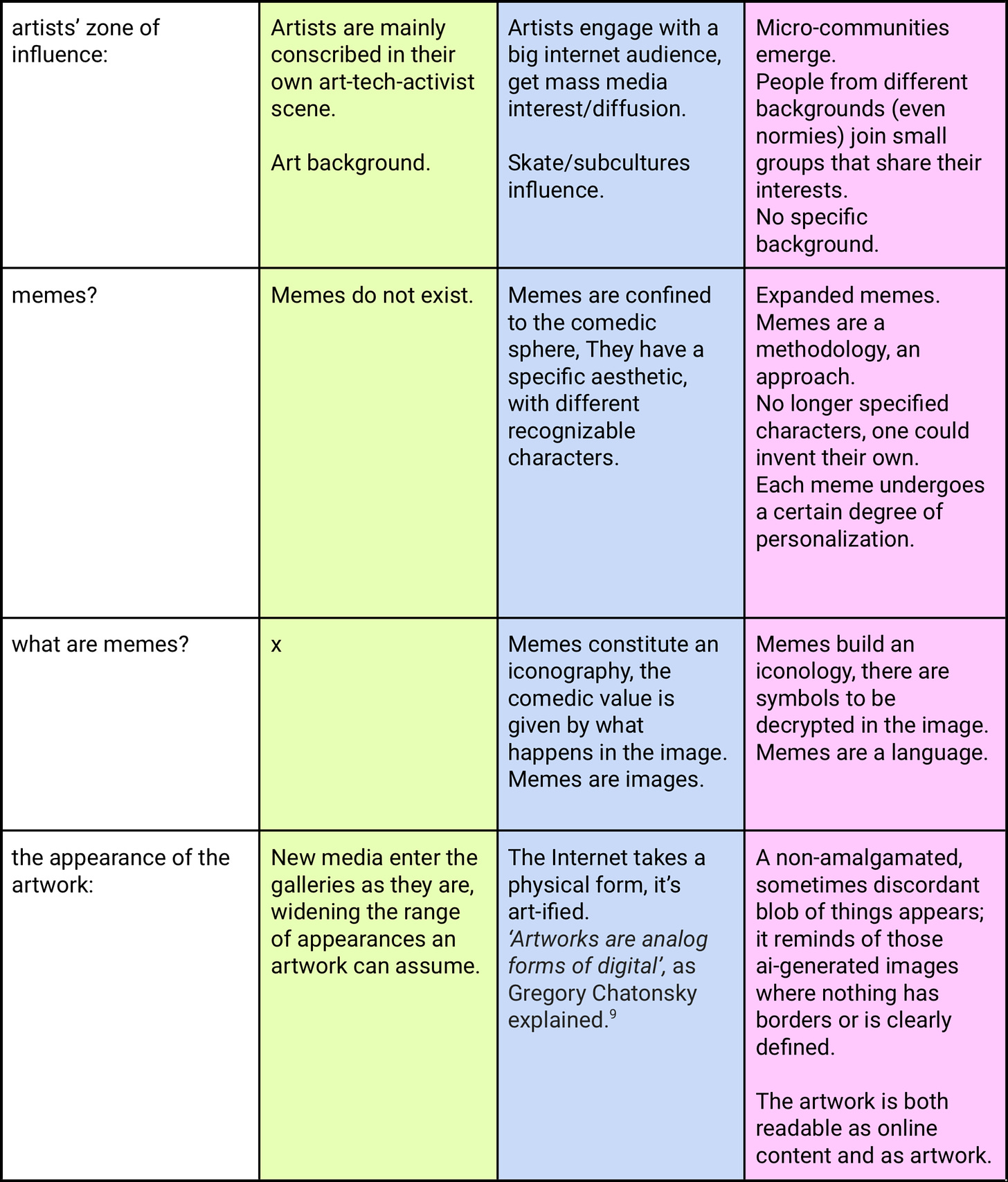
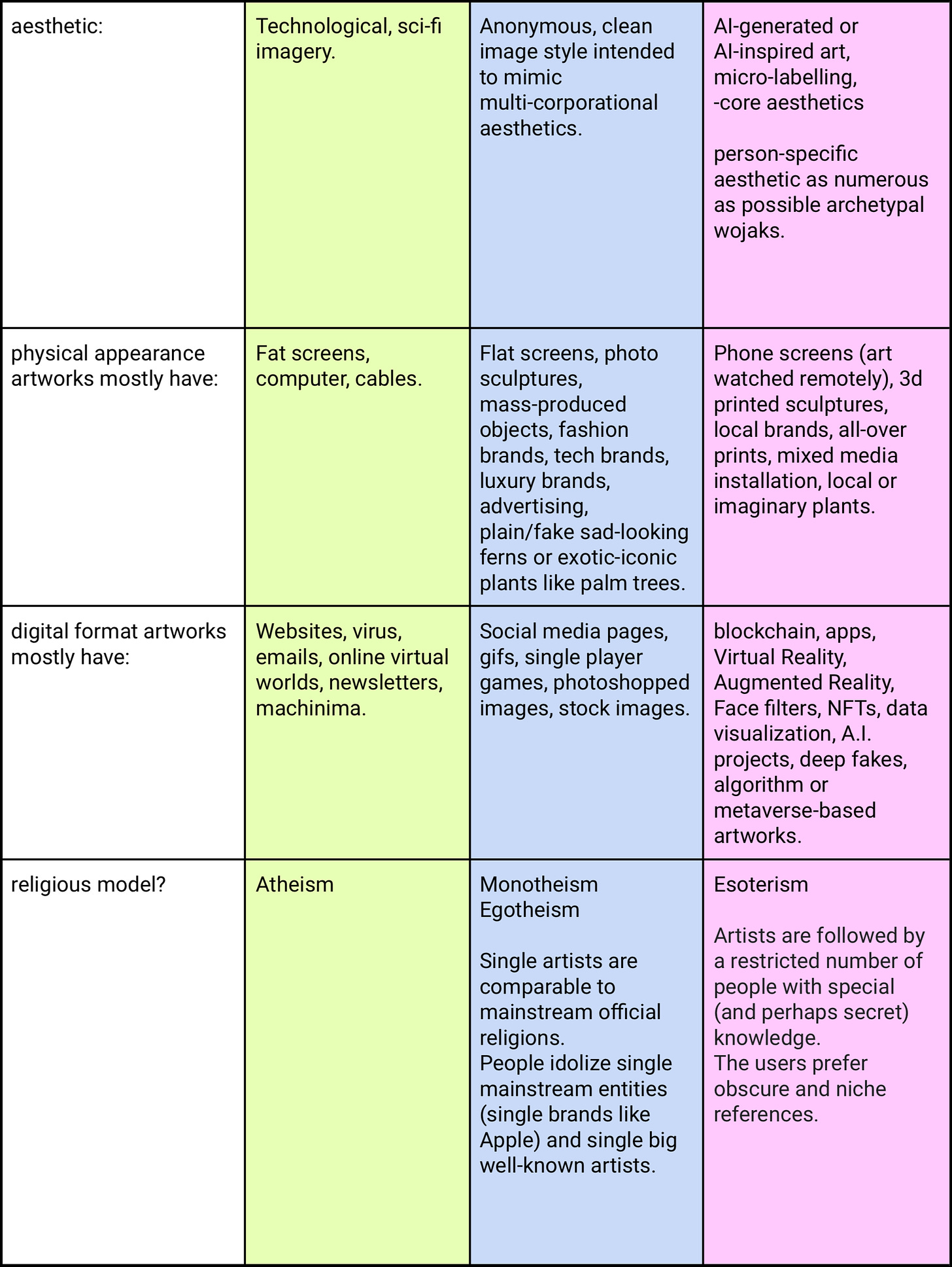
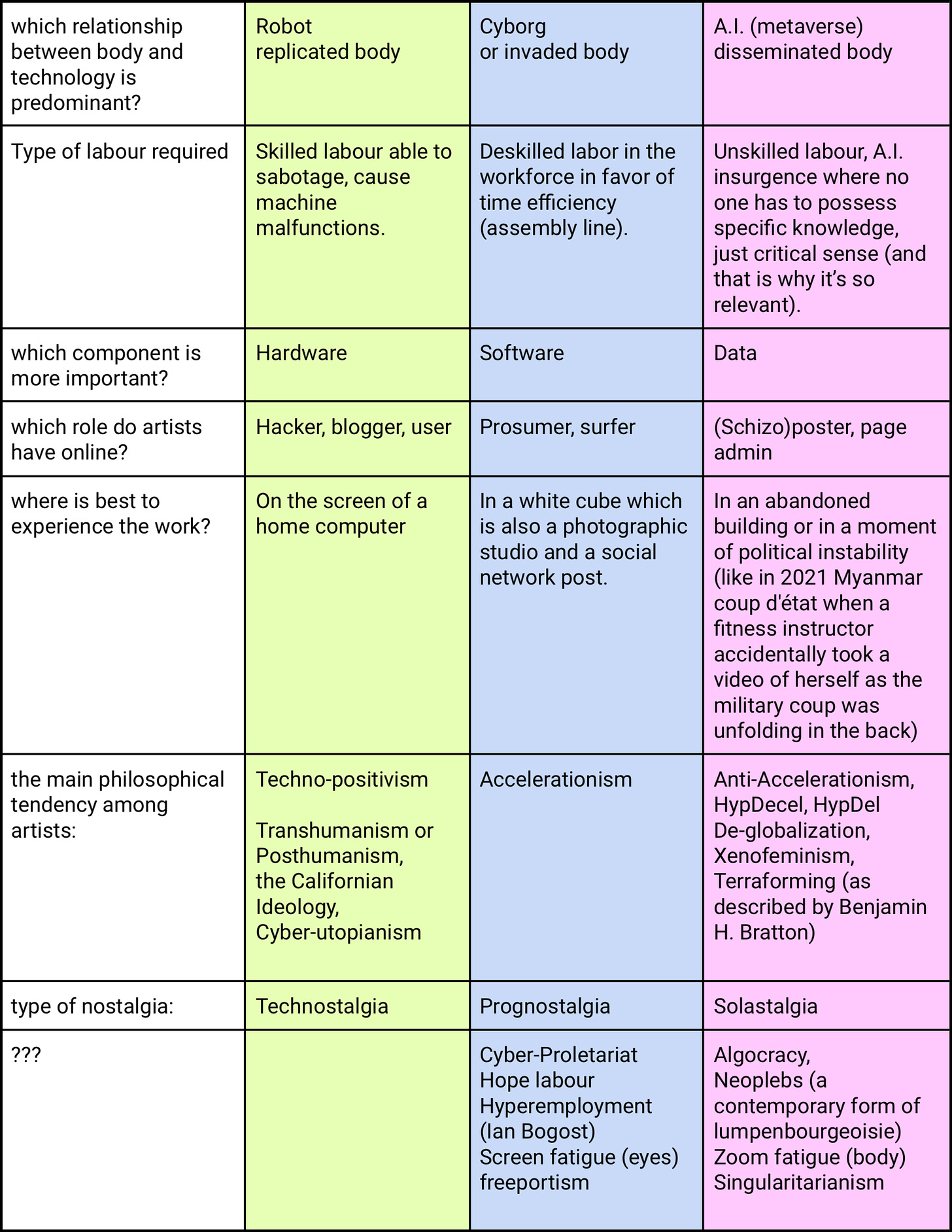
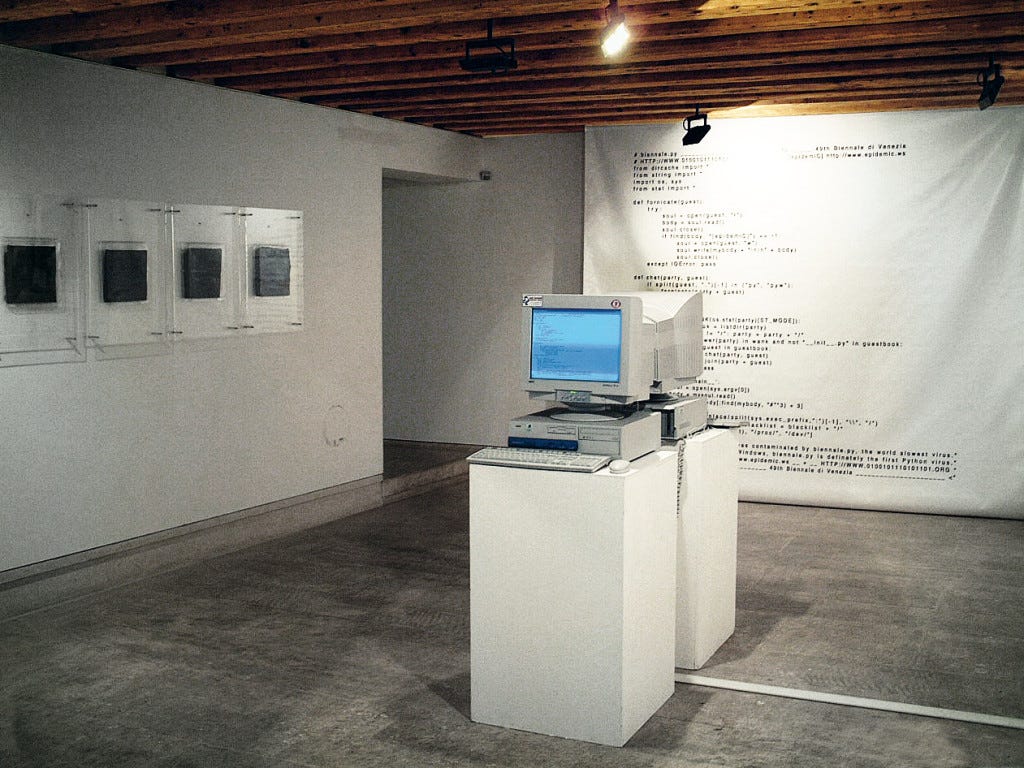
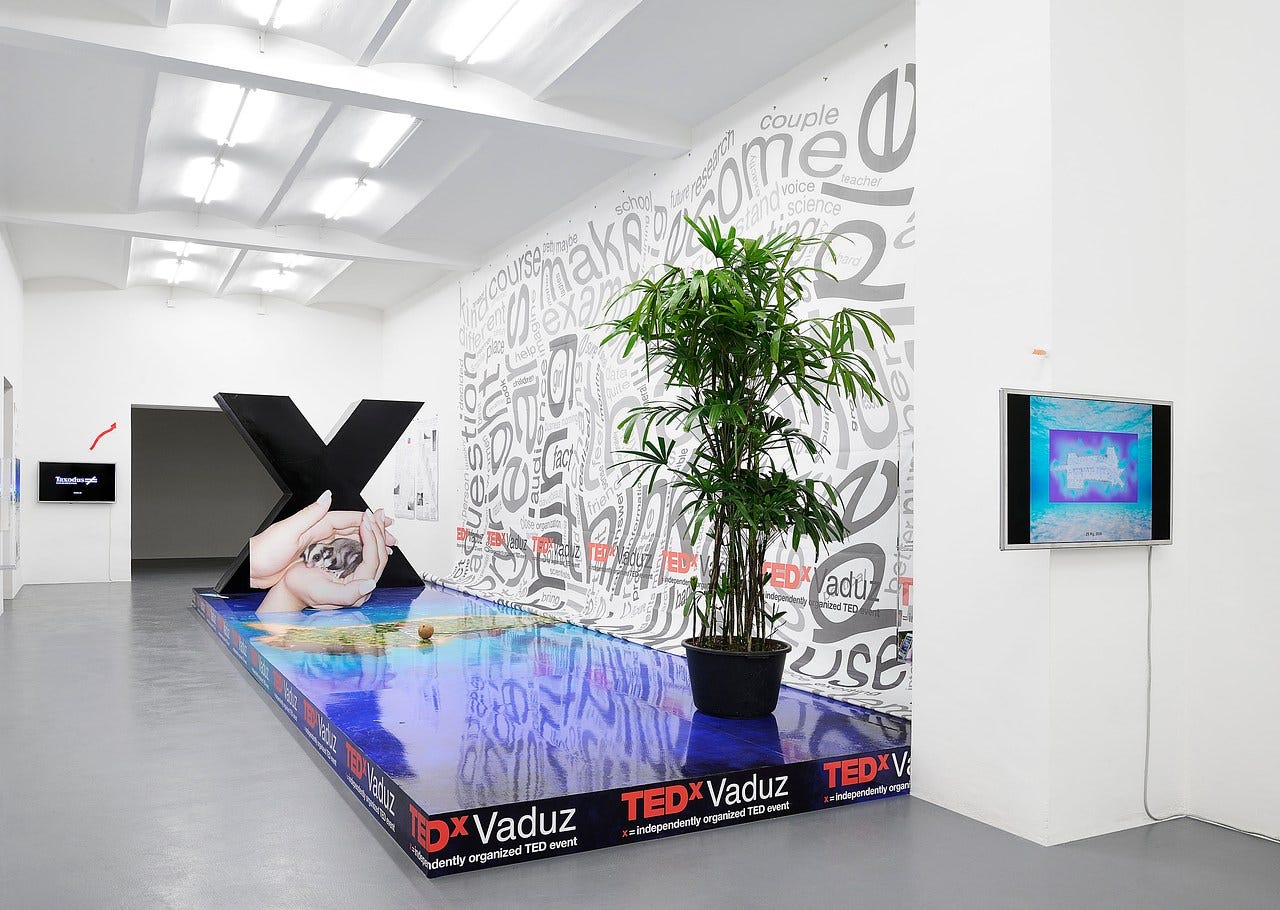
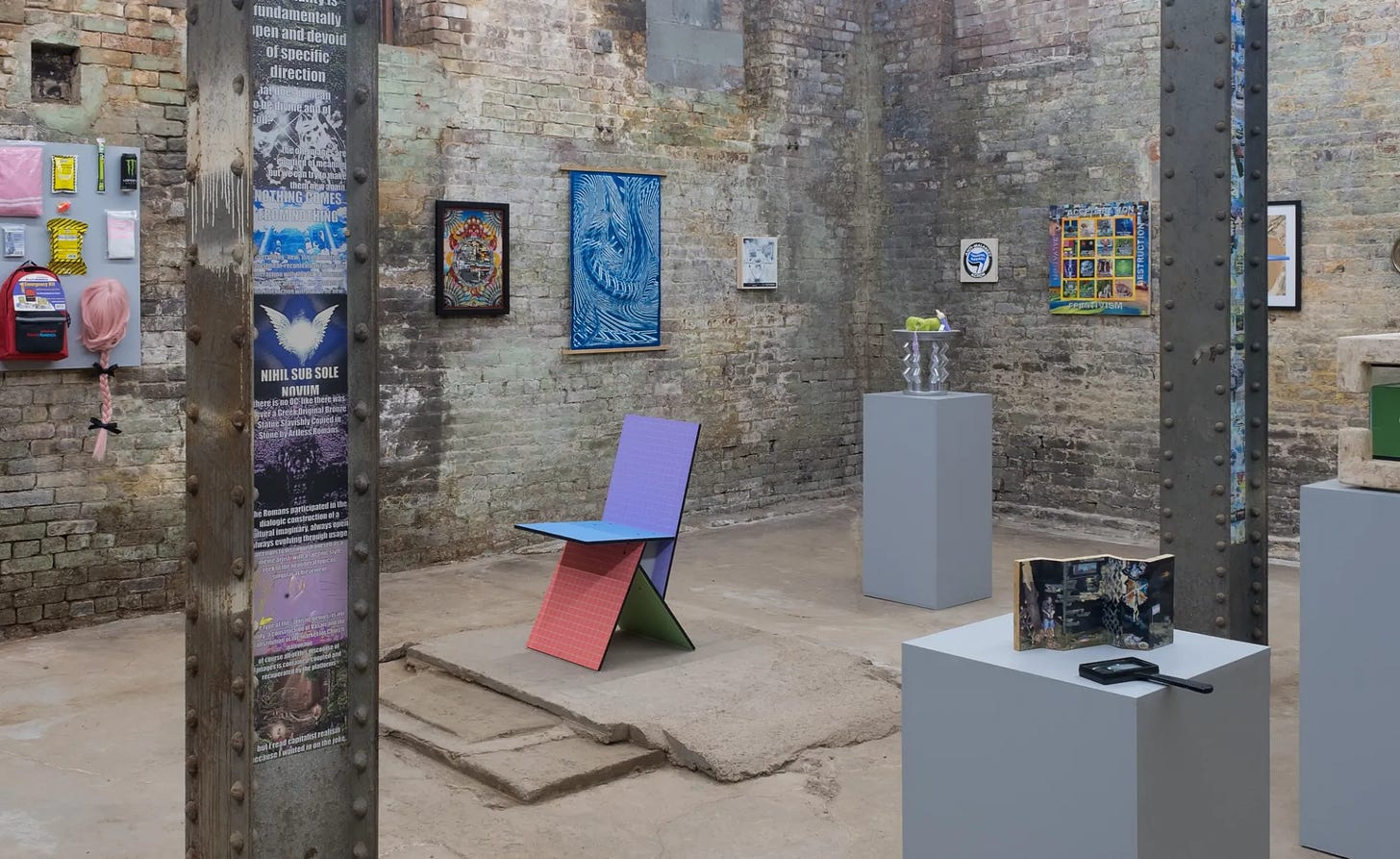


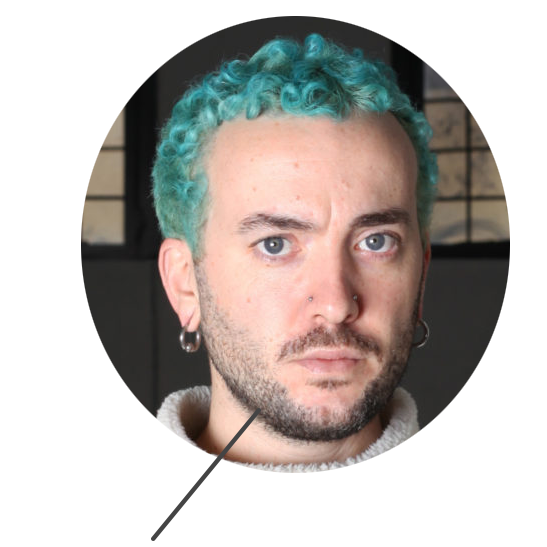

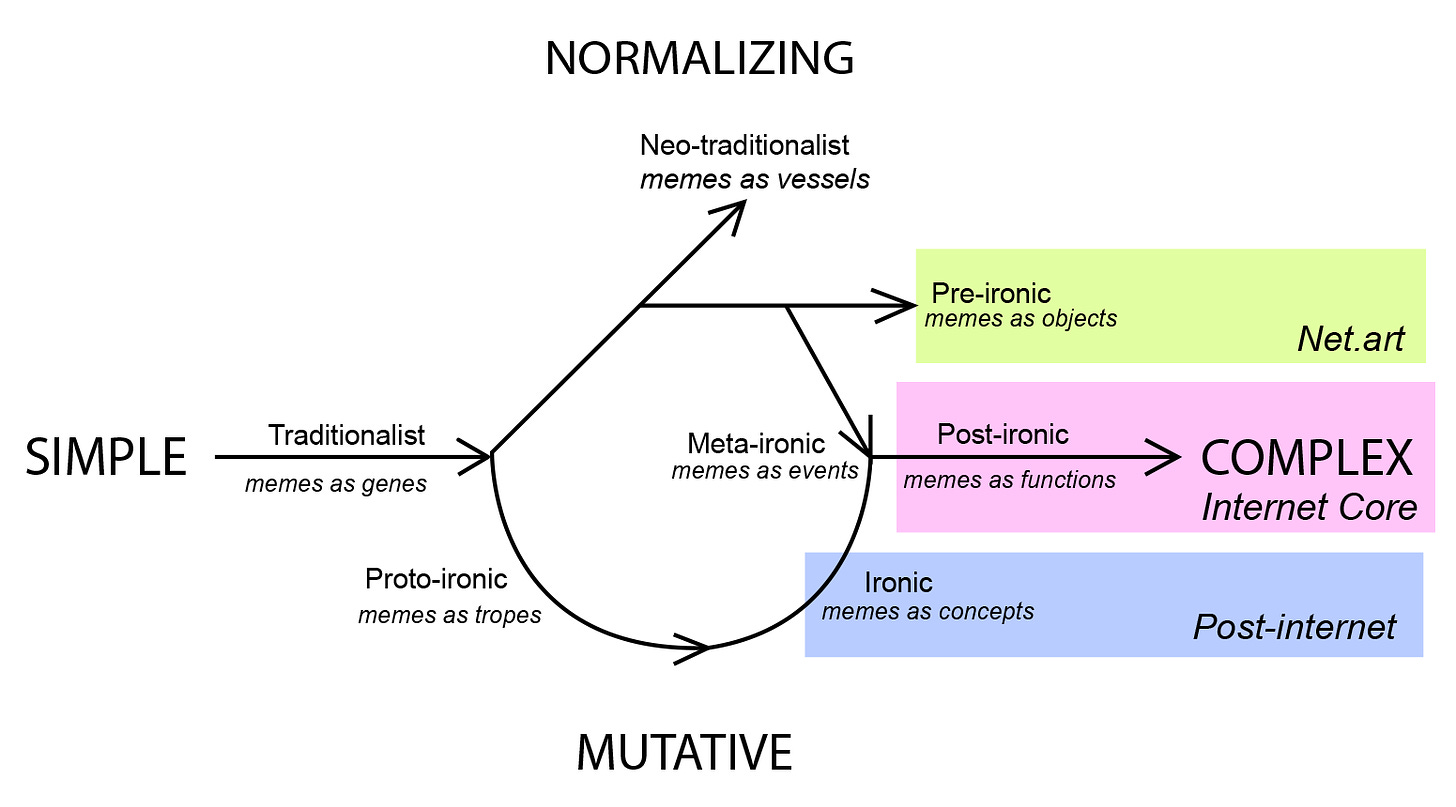
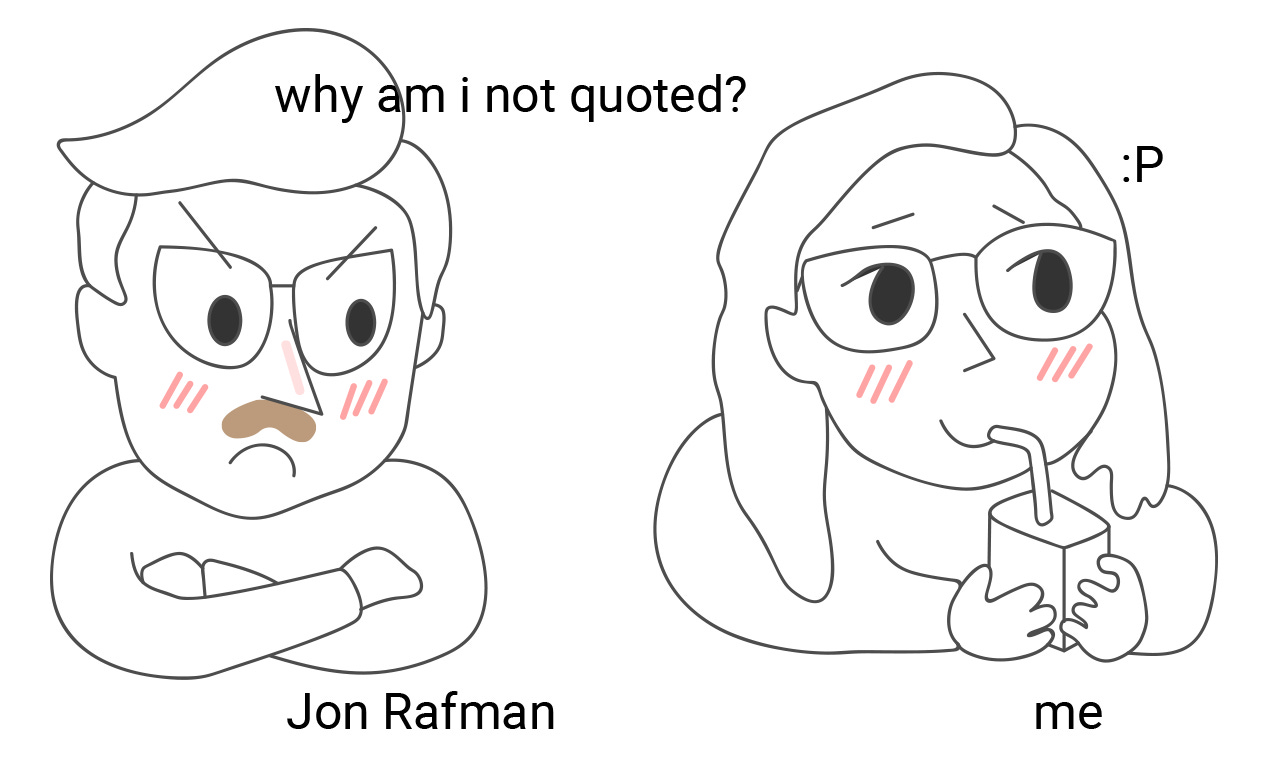
♾️🆘